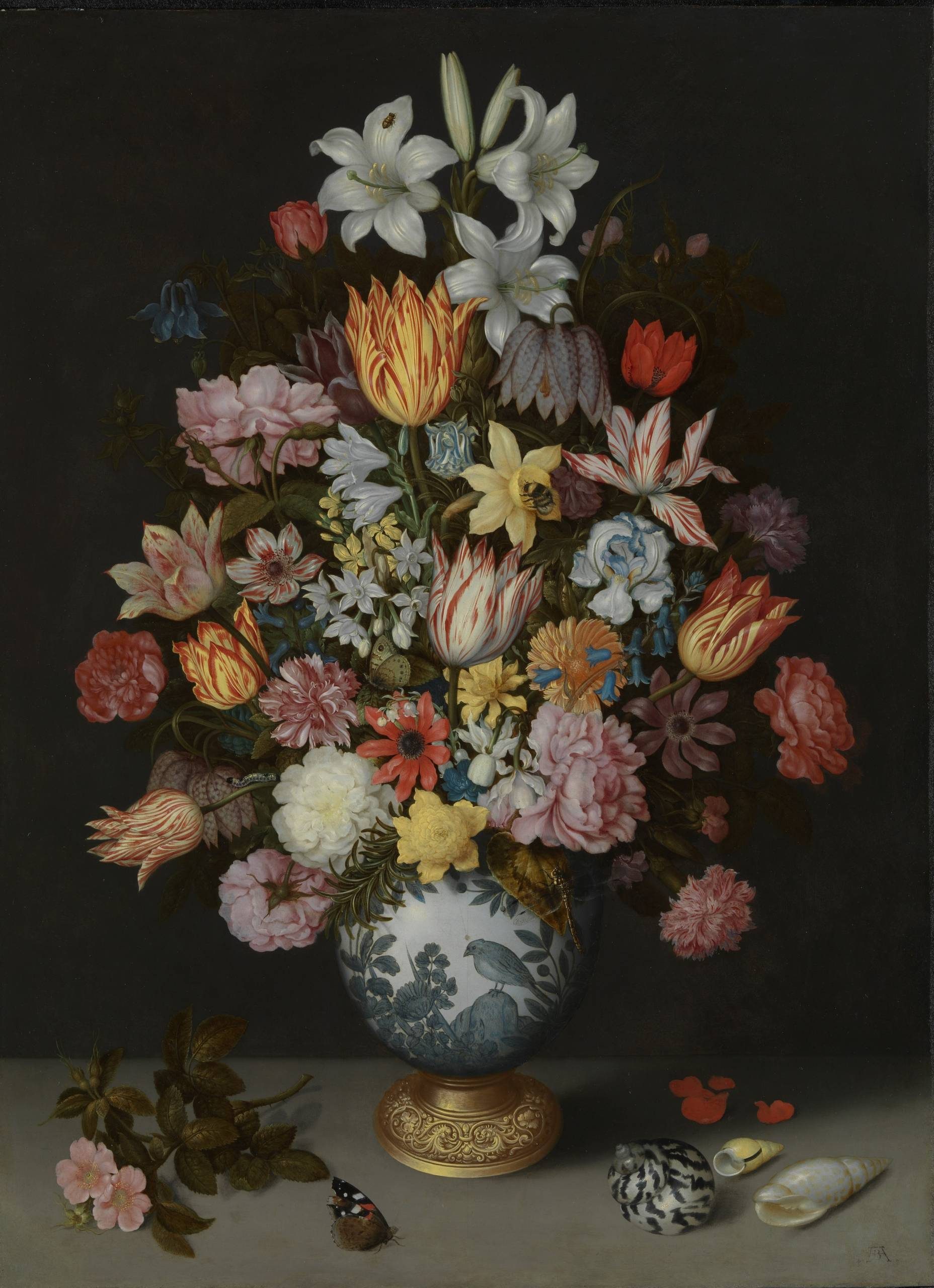Dutch Flowers
29 October 2022 – 15 January 2023
Dutch Flowers ran from 29 October 2022 – 15 January 2023.
This exquisite exhibition explored the development of Dutch flower painting from its beginnings in the early 17th century to its blossoming in the late 18th century. It featured a selection of the finest examples of Dutch flower paintings from the National Gallery’s collection, including works by Ambrosius Bosschaert the Elder, Rachel Ruysch and Jan van Huysum.

About the
Exhibition
At the turn of the seventeenth century, Netherlandish artists such as Ambrosius Bosschaert the Elder were among the first to produce paintings that exclusively depicted flowers. The sudden emergence of this genre was undoubtedly linked to the development of scientific interest in botany and horticulture. By the 1630s speculative prices for the most coveted bulbs and flowering plants had reached spectacular heights – the so-called ‘Tulipmania’. Although prices soon crashed, the Dutch enchantment with flowers endured.
The earliest flower paintings feature flat, symmetrical arrangements comprising flowers from different seasons. Over the course of the seventeenth century, bouquets become more relaxed, with symmetrical rhythms and a willingness to overlap even the most costly flowers to create a more natural sense of depth. By the end of the following century, flower paintings were considered largely decorative, with a lighter palette more in keeping with ‘modern’ tastes.
Exhibition organised by the National Gallery, London, with Compton Verney.
